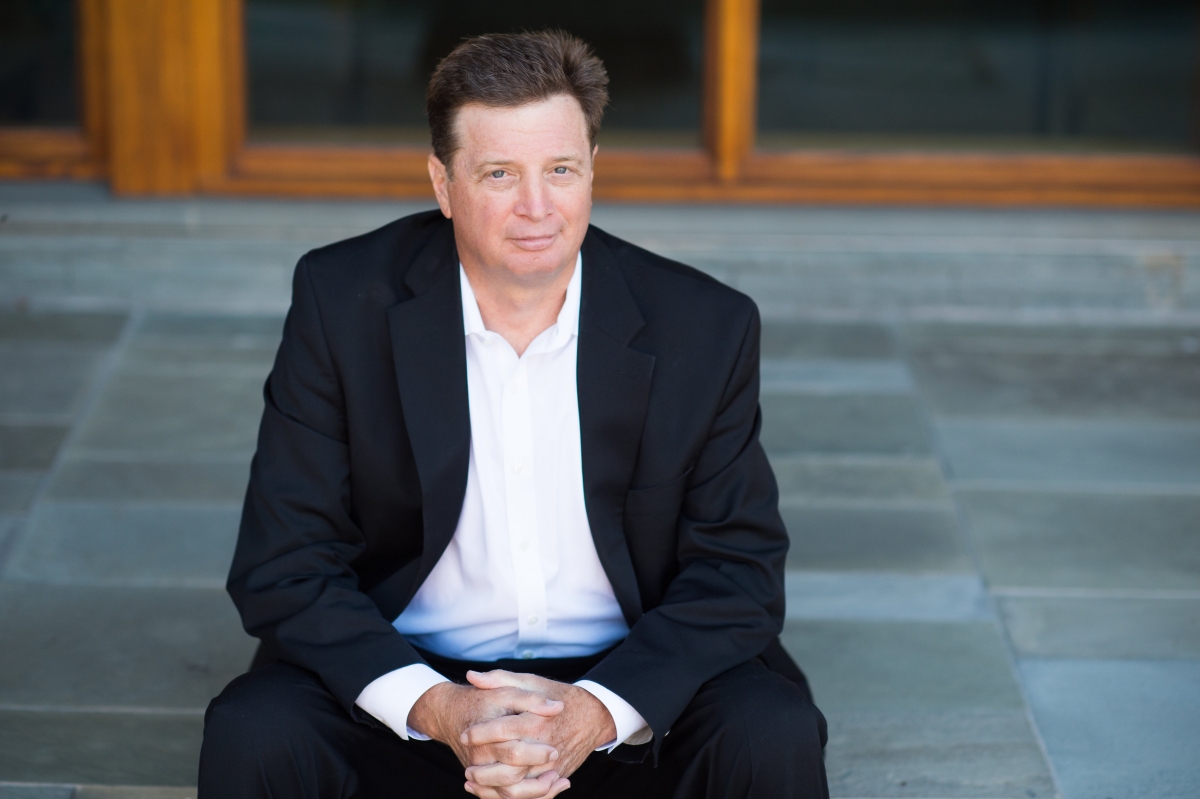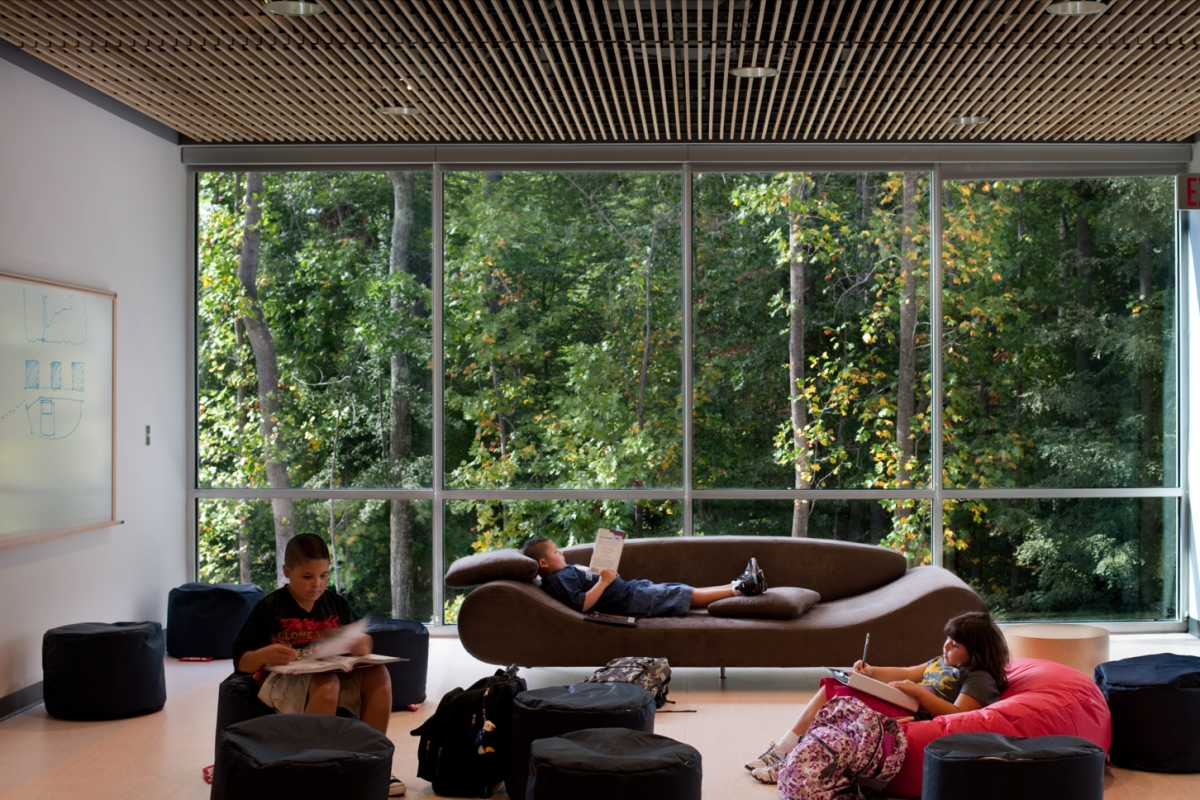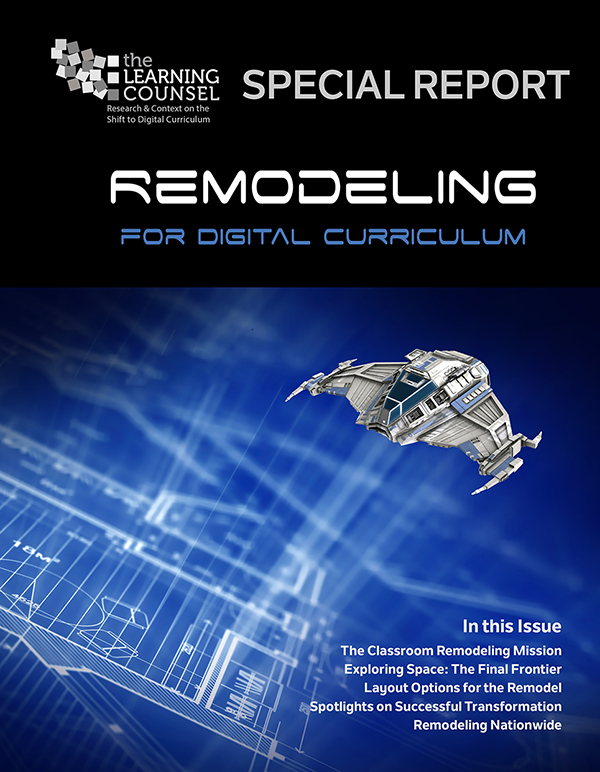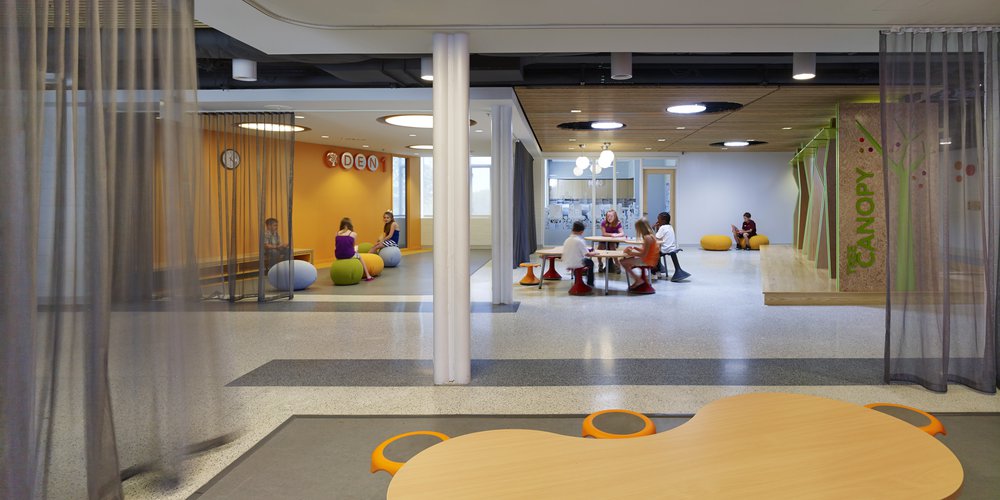If happiness, in large measure, is determined by personal confidence in one’s ability to reach their potential, then we must ask ourselves, “are we as educators doing everything to instill confidence?” Let’s use that as the launch point to discuss the redesign of today’s schools and the evolution of education.
The spaces and places in which children and young people learn have a profound effect on how they feel about themselves, and therefore how confident they are. The space effects how well they learn but also who they are and who they will be. A clean, upbeat environment also helps teachers teach. So why aren’t schools designed like Disneyland or the newest shops in the best neighborhoods, which have put enormous research into capturing attention, creating interaction and accomplishing a great and, hopefully, meaningful human experience?
Belief and budget: this article takes aim at helping all leaders and educators believe, and budget should follow.
New Frontier
If you happen to find yourself in conversation about the shift in education, how to increase student engagement, how to “transform” your class, know this: your peers across virtually every state of the nation are having the same talk. Steve Wentz, the CTO of Pasadena ISD (TX) told the Learning Counsel: “We’re on the cusp of seeing some huge differences in the education market. It’s a hundred-year-old process that needs to be changed. Turning this ship is difficult. Everybody is comfortable with the old stuff. But don’t make changes and we’ll become irrelevant.” (See complete interview with Mr. Wentz here).
There can be no question we have a long way to go to have all classrooms redesigned into flexible learning spaces. It will take time, a change in the way we budget and a lot of sweat from instructors and administrators to accomplish this shift.
As educators, we identify critical thinking, creativity and the ability to collaborate with others to solve problems as some of the essential skills that learners need, but rarely do teachers make notations of how the physical environment should be laid out per each lesson plan to support the learning objectives.
Meet Moje
Architect, Robert W. Moje, Founding Partner at VMDO Architects in Virginia has been involved in the redesign of public and private schools for forty years. That career has given him a deep understanding of how spaces foster creativity, productivity and communication and how students obtain and retain knowledge.
“Space—it’s a critical component to helping shape and form the learning experience and a key component in my current main line of investigation,” states Robert. “Spaces and places have an important aspect in shaping mood and attitude. Research is catching up now with the science which proves what anyone could always observe—that their mood and attitude is one of the most significant factors in a person’s ability to learn and retain knowledge and develop their intellect.”
One of the important ways design impacts teaching is by aiding instructors through the mechanics of the room itself so they can adapt lessons around objectives.
Any educator would agree that if students recognize direct connections between schoolwork and their physical environment, their personal lives and the world around them, academic engagement rises.
Principal Erin Russo of Discovery Elementary, a VMDO designed public school in the Arlington (VA) Public School District, spoke directly to this factor: “With this space we can really get creative and experiment and generate really meaningful experiences for the students. We as instructors now focus on how students learn and how we can enhance those meaningful experiences with the spaces themselves.”
Industrial Flaw
Science is now telling us what teachers have always known: that individuals learn at different speeds and different levels and want to know all types of different things. The firehose approach to whole classroom teaching was tragically flawed within the Industrial Age models of school construction.
“That current classroom model, as science in education is proving, is pretty flawed,” said Moje. “What we’ve found is that a school ought to look a heck of a lot more like a Starbucks. It ought to look a lot more like a Discovery Museum. It ought to look more like a scene shop for a Broadway production or a movie set. It ought to have all sorts of tools and resources available when the students want them and need them and have all kinds of different spaces. Open spaces, discrete spaces so that they are appropriate for the activities that happen in the course of the day.”
Technology now gives us, logistically, the opportunity to deliver individually-paced learning to any student for what they’re curious about and what they want to learn. We’ve just scratched the surface of what’s possible, but now there is no argument that that possibility is there for truly individualized learning.
In that regard, Kurt Madden of Fresno Unified, who has 73,000 students under his charge, talked to the Learning Counsel about his team’s recognition 9 years ago that technology was going to change the way we teach. “We’ve been teaching with paper and pencil for a couple hundred years. Now we are in this big shift. It’s not going to be easy. But you need to work through the integration. The role of teachers in this is going to change. Kids are going to be learning on their own paths with these tools. Consider how you, as an adult like to learn something: you try it, you fail, you look to someone with experience as a guide so you can find your path, and keep working at it. Teachers will need to be more like personal trainers, like coaches.”
Tactics
When getting into a conversation about redesigning a school, budgets are the pain point of any Superintendent or Assistant Superintendent. Often the question is, does it require new funding sources or a change in budget priorities? The answer is always that what it most required is a change in mindset.
Taking one of Virginia’s worst performing school systems and flipping it to become one of the top was a gold star in Robert Moje’s career. “Many years back when the state of Virginia passed SOL (Standards of Learning) requirements, the State Department went in and looked at this particular school – Manassas Park City Schools – and told them there is no way this demographic, this group is ever going to make it, you should just go out of business (as a City) and they should just dissolve the whole thing and become part of the county. They said, ‘We can mix you up with some more wealthy areas and that’s your only path’.”
As Moje tells it, the school district was determined and wouldn’t agree, and bravely went on anyway with dramatic remodel plans. The district worked with engineers and architects and planners for five years to complete the first school. Over a period of sixteen years the district doubled their square-footage and remodeled every square foot.
“With a lot of planning, and lot of budgeting and cutting and reallocating, they built their district to be twice as big as it used to be,” stated Moje. “Nobody wanted to live there and, after some success, it became one of the more popular places to live because their school system was so good.”
Manassas City Schools went from a school population where only 27% of the students went on to anything—college, career, military—to 85% of graduates going on to college or career.
It is possible to make those kinds of changes and in Moje’s view, “It’s mostly by changing culture and an understanding of what’s possible.”
The complete special report on the Remodeling for Digital Curriculum is available for FREE download.
(Look for part 2 of this feature next week, which will delve deeper into examples of schools that have transformed through complete redesign)










